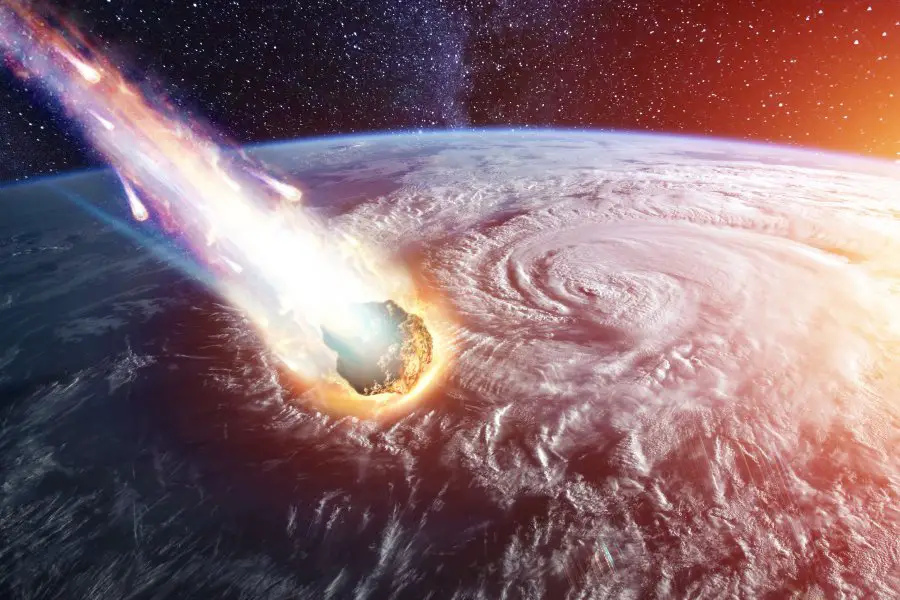Scientist Warns Earth Could Be Hurtling Towards A Catastrophe Worse Than The Dinosaur Extinction
Tags: opinion

The continued increase in carbon dioxide emissions and increasingly rapid global warming is likely to plunge humans into extinction, an Australian scientist has warned.
For now, with Covid-19 top of the agenda, the prospect of a sustained international effort to fight global
warming seems further away than ever.
According to Andrew Glikson, our focus is in the wrong place.
Glikson is an Earth and Paleo-climate scientist at the Australian National University.
Based on his research, the signs are ominous that a major catastrophe of dinosaur proportions is becoming imminent.
Glikson has based his findings on his studies of other points in history when mass extinctions took place.
These include the end of the dinosaur era – 66 million years ago, as well as another mass extinction occurrence 55 million years ago.
In both instances, Glikson found there to be a rapid increase in carbon emissions at the time of the catastrophes.
“My research suggests the current growth rate of carbon dioxide emissions is faster than those which triggered two previous mass extinctions, including the event that wiped out the dinosaurs,” he said.
What happened 66 million years ago to cause dinosaurs to perish?
After an asteroid collided with Earth, the resulting smashed rocks and fires emitted huge amounts of carbon dioxide over a period of 10,000 years. Similar to today, global temperatures soared and sea levels rose.
Oceans also became acidic and approximately 80% of species, including dinosaurs, became extinct.
The second event occurred 55 million years ago. For a 100,000 year period, temperatures spiked. It’s not completely clear what caused it, but one theory called the ‘methane burp’ hypothesis, puts forward the notion that a volcanic eruption triggered a sudden release of methane from ocean sediments, which killed many species.
Comparing today’s numbers to the previous extinction periods
Before the industrial age at the end of the 18th century, carbon dioxide levels were at about 300 parts per
million.
In February this year, the carbon dioxide in the atmosphere was at a level of 414.1 parts per million.
Total greenhouse gas levels, which include carbon dioxide, methane, and nitrous oxide, have reached almost 500 parts per million of carbon dioxide.
According to Glikson’s article,“carbon dioxide is now pouring into the atmosphere at a rate of two to three parts per million each year.
“Using carbon records stored in fossils and organic matter. I have determined that current carbon emissions constitute an extreme event in the recorded history of Earth,” he continued.
“My research has demonstrated that annual carbon dioxide emissions are now faster than after both the asteroid impact that eradicated the dinosaurs (about 0.18 parts per million CO2 per year), and the thermal maximum 55 million years ago (about 0.11 parts per million CO2 per year).”
He also points to numerous current events which he believes are proof that we’re heading in the wrong direction. Which suggests its a case of ‘when’ and not ‘if’.
More reasons why Glikson thinks we’re heading towards extinction:
– One million animal and plant species threatened with extinction as per the United Nations.
– The increase in time to the next forecast ice-age from 20,000 years to 50,000 years.
– Rising Arctic temperatures and major ice melt.
– Weakened Arctic jet stream.
– The expansion of the tropics toward the poles at a rate of 56 to 111 kilometers per decade.
– The shifting of Tropical and extra-tropical cyclones.
Glikson believes that mass extinction is avoidable. But only through dramatically reducing carbon dioxide emissions. And only by developing technologies to remove carbon dioxide from the atmosphere.
But he also cautions that ‘on the current trajectory, human activity threatens to make large parts of the Earth uninhabitable. A planetary tragedy of our own making.’
Sub-polar areas and sheltered mountain valleys where cooler conditions would let flora and fauna survive may become the only habitable places for humans if our planet keeps heading towards its current destiny.
Read more: GEOLOGISTS SUGGEST A NEW OCEAN IS BEING BORN IN AFRICA AS THE CONTINENT IS VERY SLOWLY PEELING APART
Image Credit: Ð?лекÑ?анд Марко

Leave Comment: